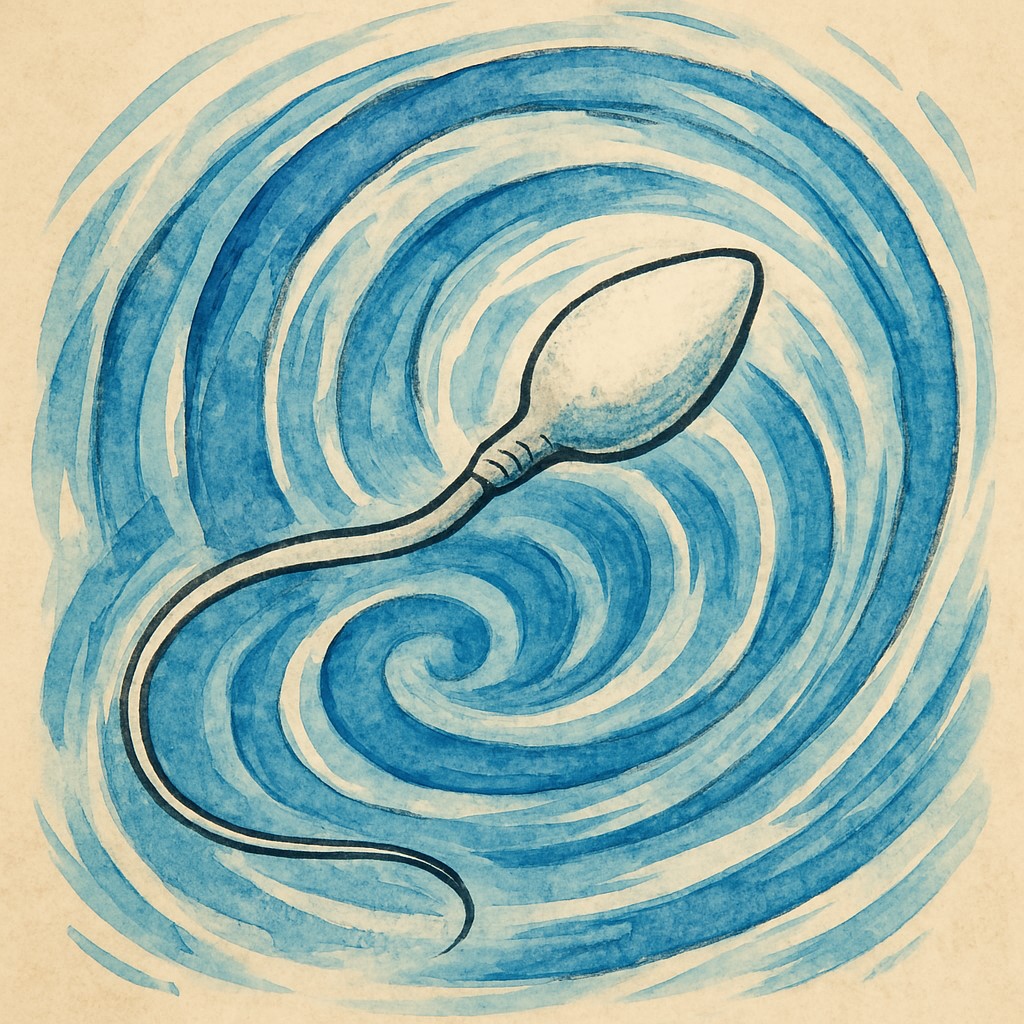Media release
From:
Monash researchers have discovered that swimming sperm create swirling fluid vortices – shaped like rolling corkscrews – giving them an extra boost in the race to the egg.
Published in Cell Reports Physical Science, the study reveals that these vortices attach to the sperm cell and rotate in sync, adding extra spin that enhances propulsion and helps keep them on a direct path through the fluid.
"Imagine taking a straight rubber band and twisting it into a spiral. Now, add another turn to create a superhelix - a tightly coiled, extra-twisted structure," said Professor Reza Nosrati from Monash University.
"For sperm, this extra twist in the fluid enhances their movement, following them as it tightens, allowing them to swim more efficiently."
Using advanced imaging techniques, the researchers based in the Applied Microfluidics and Bioengineering (AMB) Lab at Monash’s Department of Mechanical and Aerospace Engineering, reconstructed the 3D flow field around sperm, revealing how these corkscrew-shaped flow fields influence movement.
"As the sperm swims, its flagellum (tail) generates a whipping motion that creates swirling fluid currents that could optimise their propulsion in the reproductive tract. What’s really fascinating is how these spiral-like ‘imprints’ in the surrounding fluid attach to the sperm body and rotate in sync, adding extra thrust.”
Professor Nosrati said understanding how sperm interact with their fluid environment is crucial for reproductive science.
“The size and strength of these flow structures could impact sperm interactions with nearby surfaces, other sperm, or even the egg itself,” Professor Nosrati said.
The study expands on previous work by Professor Nosrati’s team, which imaged sperm motility near surfaces (Nature Communications). However, this is the first time researchers have simultaneously captured both the flagellar motion and the surrounding 3D flow field, providing unprecedented insight into the mechanics of sperm propulsion.
Beyond fertility research, the findings have broader implications for understanding how other microscopic swimmers - such as bacteria - move and adhere to surfaces, which could inform studies on infection spread or biofilm formation.
"These visualisations help us to better understand the fluid dynamics and the way sperm and other microorganisms navigate through different fluids."
DOI: https://doi.org/10.1016/j.xcrp.2025.102524
-ENDS-



 Australia; VIC
Australia; VIC


